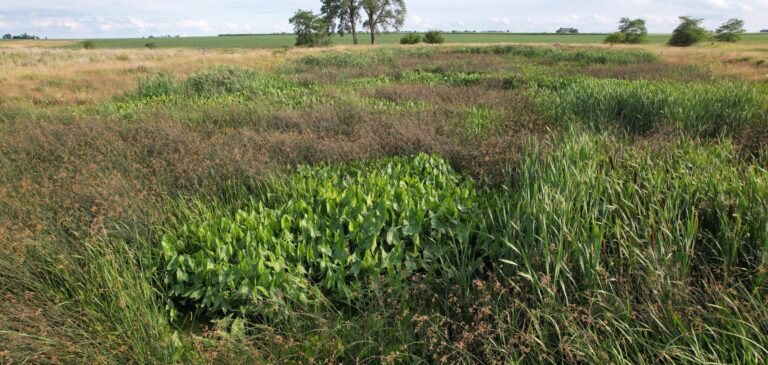To date, The Nature Conservancy has placed about 20 examples of constructed wetlands on farms in southern Illinois. Ranging in size from a quarter to a full acre, these small wild patches contrast with the regular crops that surround them, with tufts of tall grasses and impressionistic palettes of green and brown. Cattails quickly move on to new projects, while piles of sharp-stemmed rushes settle on the edge. Aquatic plants such as kelp spread on the surface of the water. Sometimes the blue flag iris appears, with their striking purple flowers. Other than occasional maintenance, such as the eradication of invasive species, constructed wetlands require little attention.
The Wetlands Initiative, an independent organization that occasionally works with The Nature Conservancy, has created six so far, with more on the way. While some projects retrofit a wetland into an existing drainage system, the agency encourages their incorporation — or at least planning space for them — when landowners replace or install new tile systems, Kostel explains.
Their goal, Kostel says, is for wetlands to “become a normal part of the working farm landscape.”
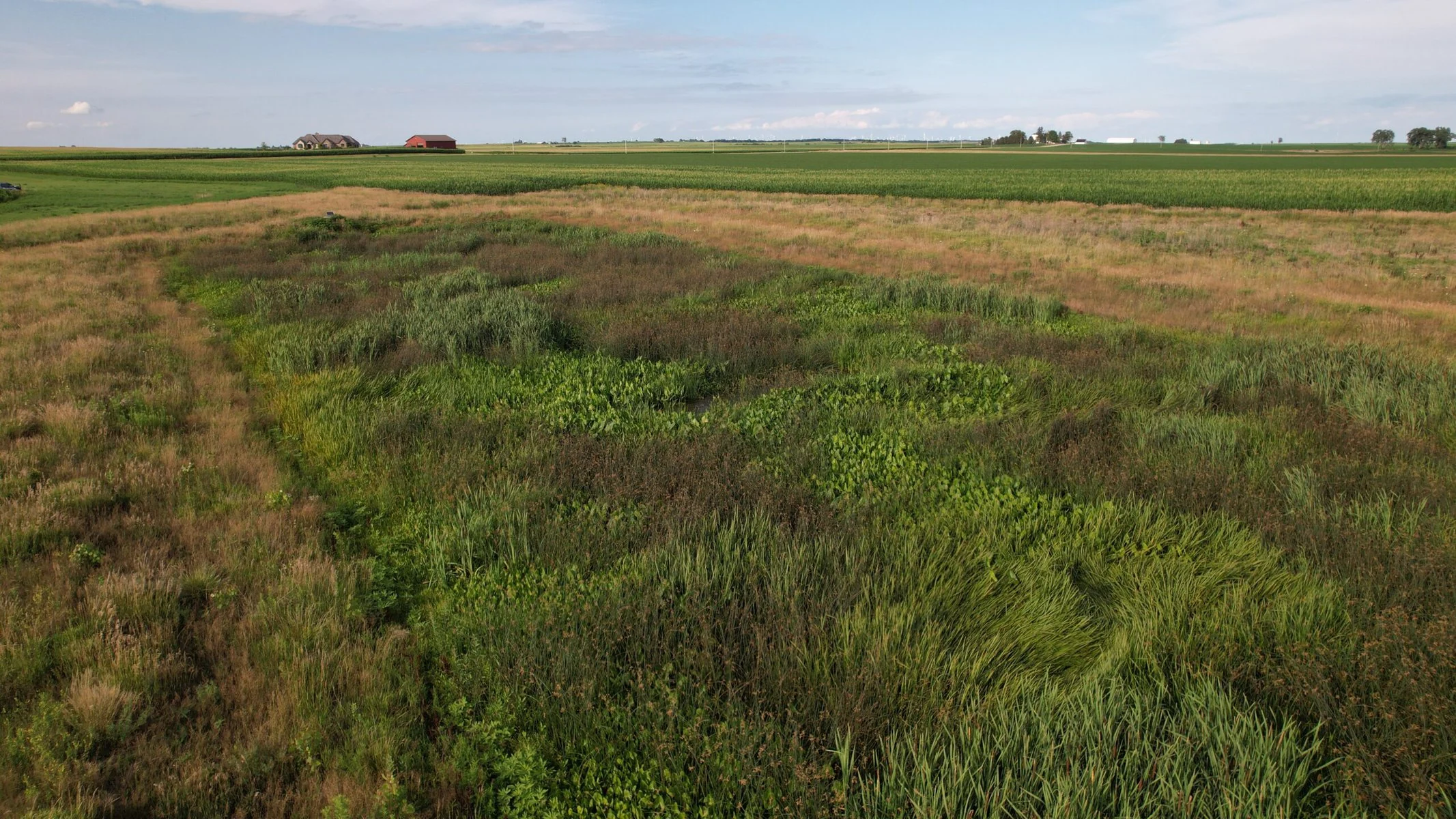

There are many logistical obstacles. Projects are expensive. With excavation, Wetlands Initiative projects range from $30,000 to $80,000. The organization covers the costs, using government programs and grants. Many farmers lease the land they work on, so decisions are not entirely up to them. But despite the hurdles for farmers and landowners, some decide it's worth it. The Wetlands Initiative partnered with farmer Rex Newton on a field that he farms as both a tenant and a landowner. The wetland, built two years ago, is positioned to connect with grass strips that already cover the field and is out of the way.
“The way they designed it, it's not a problem at all,” Newton says. “I'm glad to see it while I'm farming in this area.”
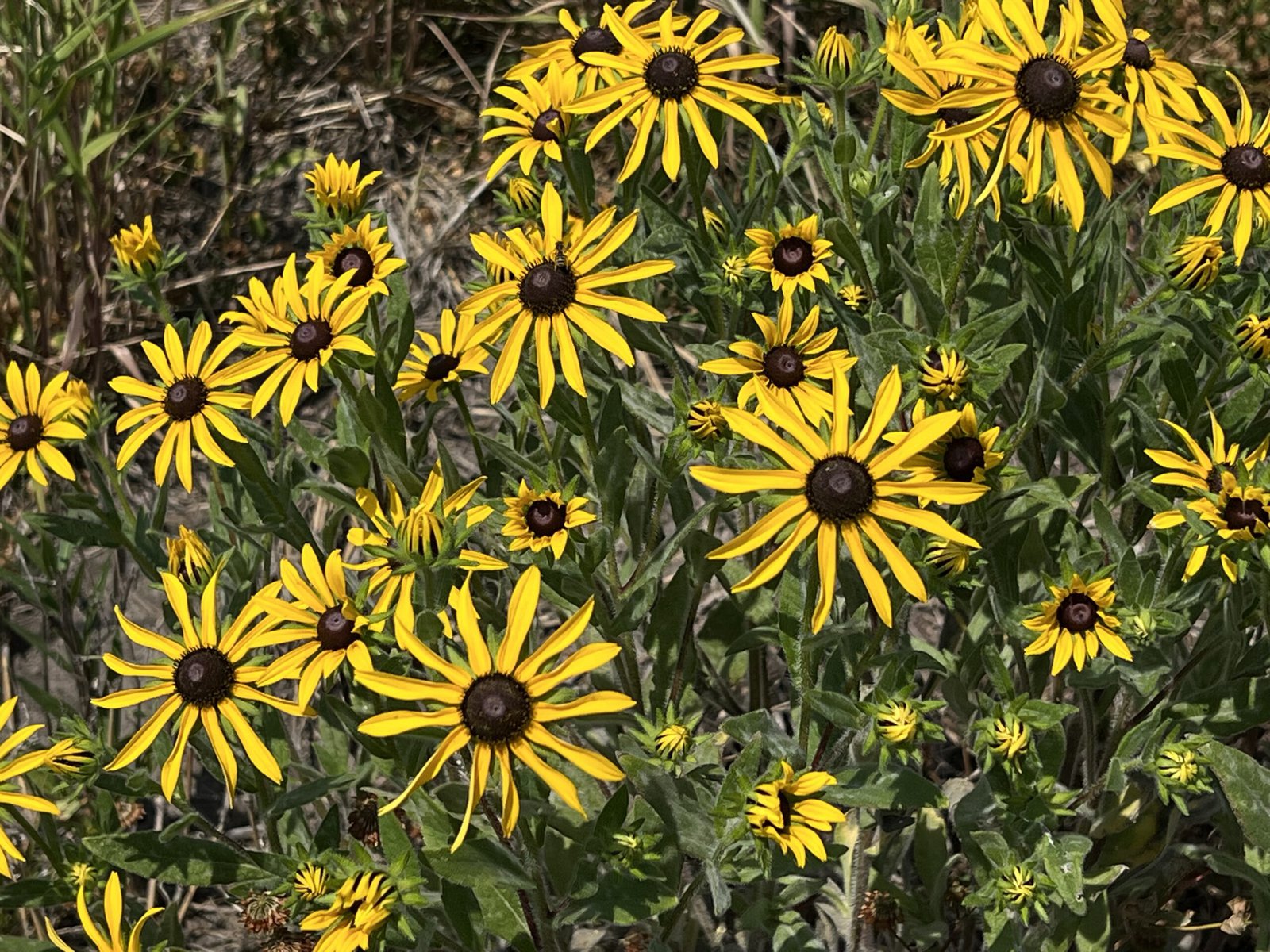

doConstructed wetlands are just one of many strategies aimed at reducing nutrients flowing through the Mississippi River Basin. Illinois is one of 12 states represented in the a special teamcreated in the 1990s, with the goal of mitigating the dead zone in the Gulf of Mexico — an effort that involves urban sewage, stormwater, agriculture and many other sources of nutrients.
In 2015, Illinois set a long-term goal reduced nutrient loss by 45 percentand an intermediate goal of 15% reduction of nitrates by 2025. However, the latest estimate, published in 2021found that nitrate levels increased by 13 percent and phosphorus by 35 percent.
But there are signs of progress, according to Gregory McIsaac, a University of Illinois professor emeritus who helped write the state's strategy to reduce nutrient loss. Rivers in the central part of the state, where there is a lot of tile drainage, are showing signs of lower nitrogen loads, according to McIsaac. He believes this likely reflects that fertilizer use is better aligned with crop needs. Basically, more fertilizer goes to the corn and less ends up in the rivers.
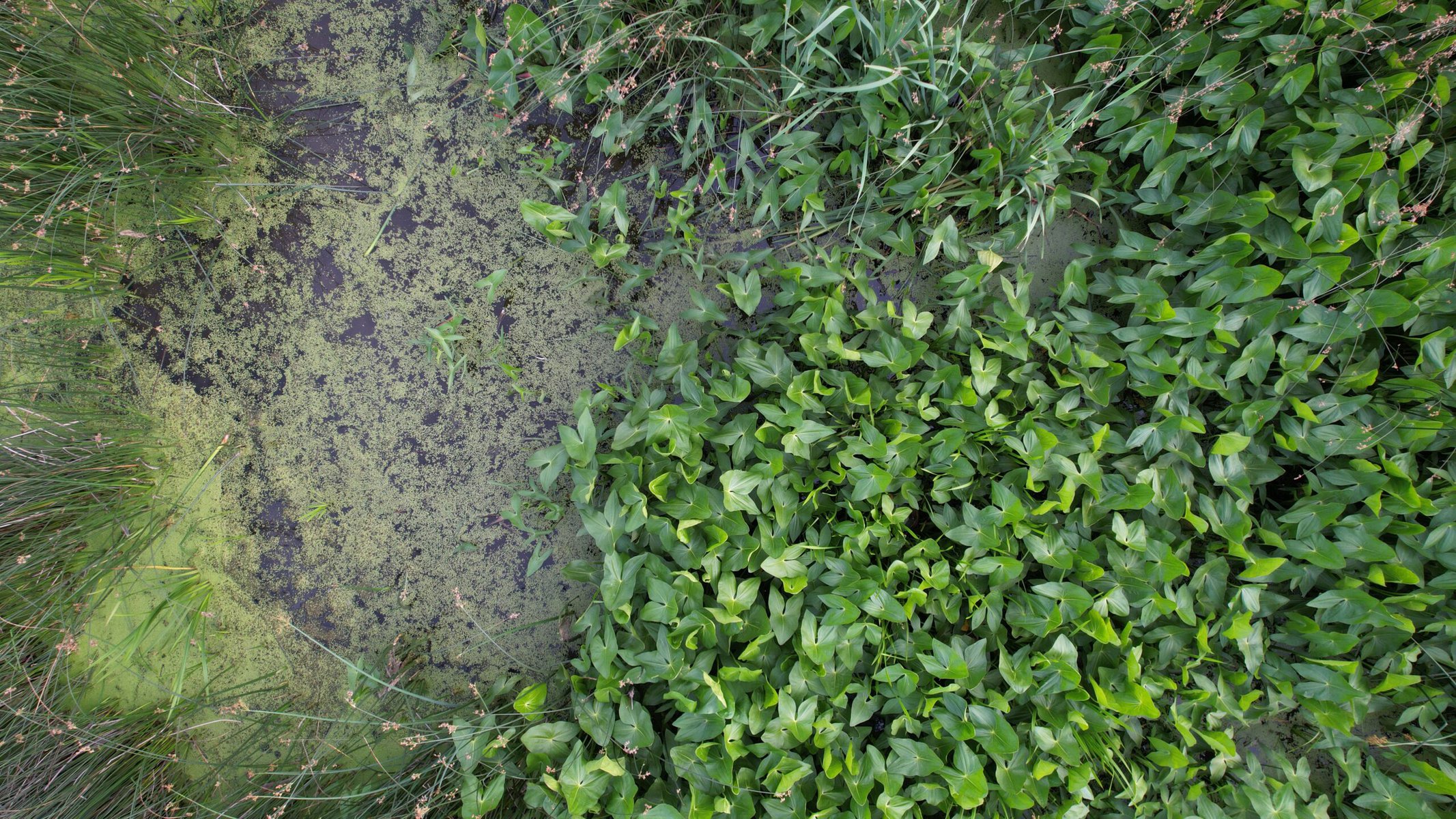

Constructed wetlands can be a tool to address nutrient loss as well as larger wetland restoration projects. While some farmers have turned land into wetlands, so far, McIsaac doesn't think the practice is widespread enough to make much of a difference. Even as research dating back to the 1990s shows that the wetlands are working and there is some state and federal funding, many landowners and farmers are not interested. Land is expensive and farmers are reluctant to convert it.
John Swanson, the water resources supervisor for Polk County in Iowa, understands farmers' reluctance to install plants on their land to filter nutrients.
“There is no benefit to the landowner or the farmer,” he says. “I really do it because it's the right thing to do.”
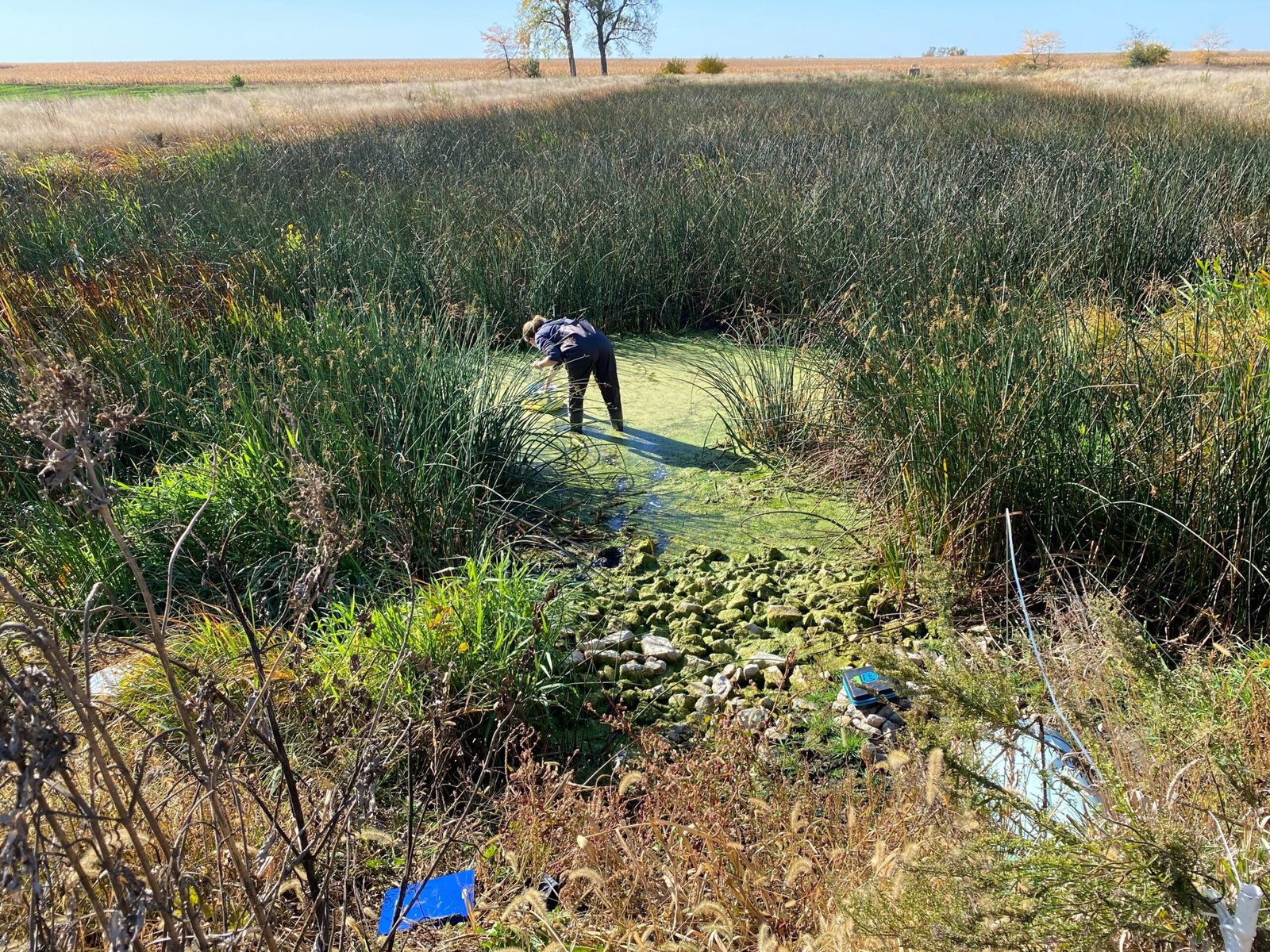

Swanson's team has worked extensively with two alternatives to nutrient filtration in engineered wetlands—bioreactors and saturated buffers. At first, it was very difficult to convince farmers to participate. the process took a lot of farmers' time and required them to bear the costs, even if the government programs eventually reimbursed them.
So Swanson's team devised the “Batch and Build” strategy to set up bioreactors and saturated buffers. The county government targeted specific locations and then reached out to all landowners in the area, handling planning and permitting. Landowners even receive $1,000 in interim easement payments per project. In just a year and a half, the Polk County team installed twice as many filtration practices as the entire state did in the previous decade, Swanson says.

